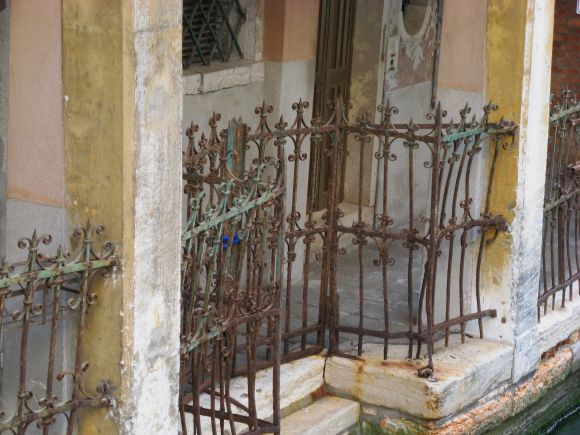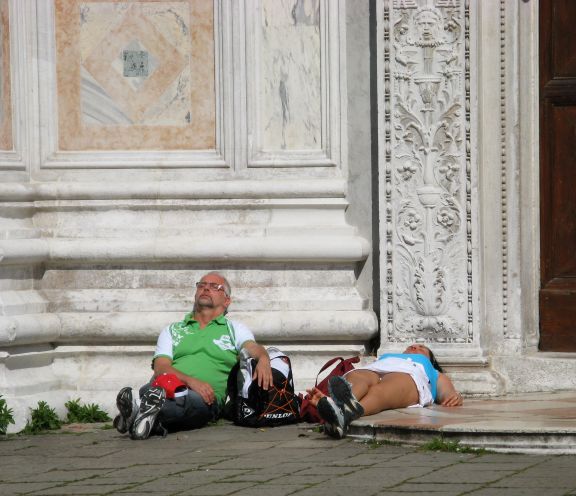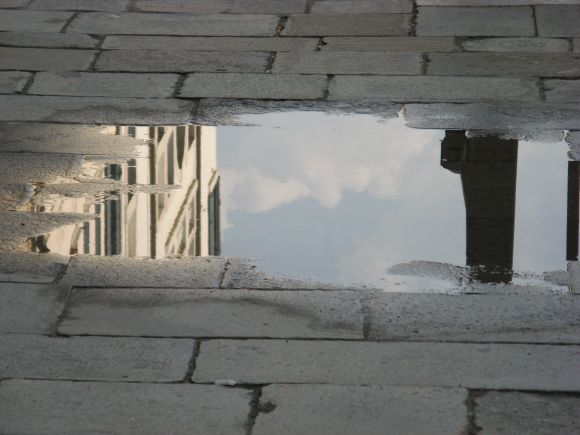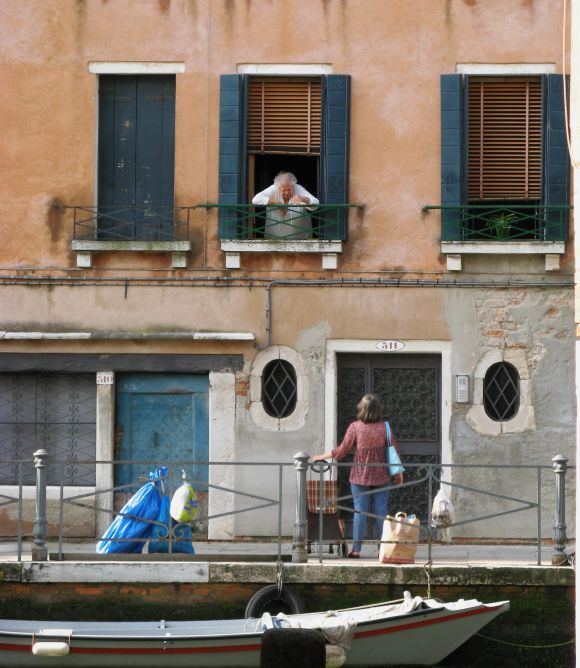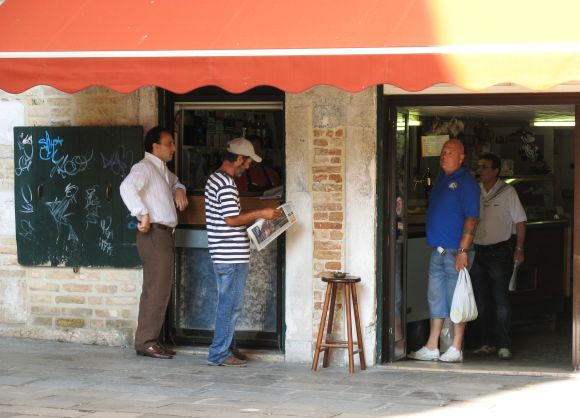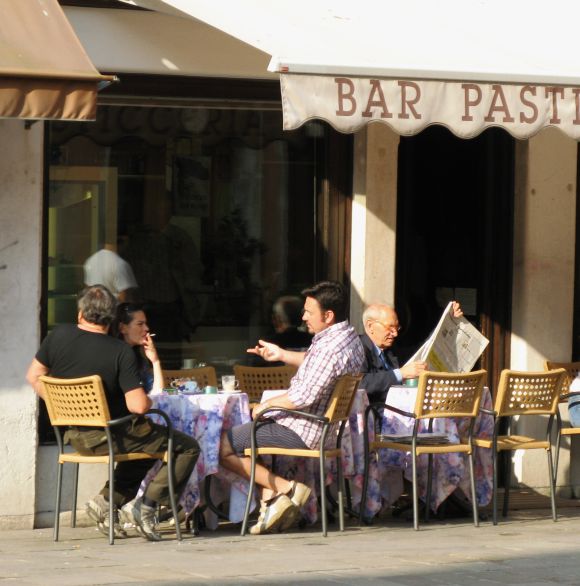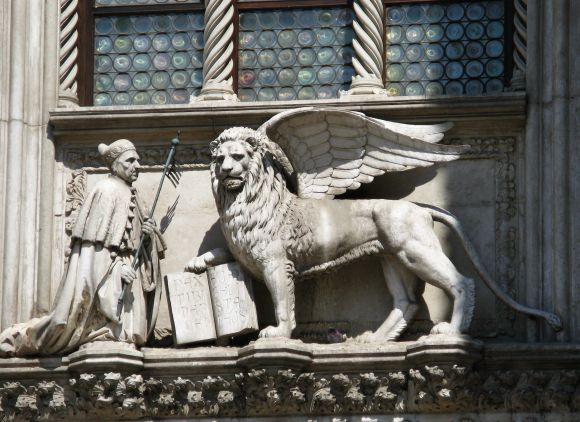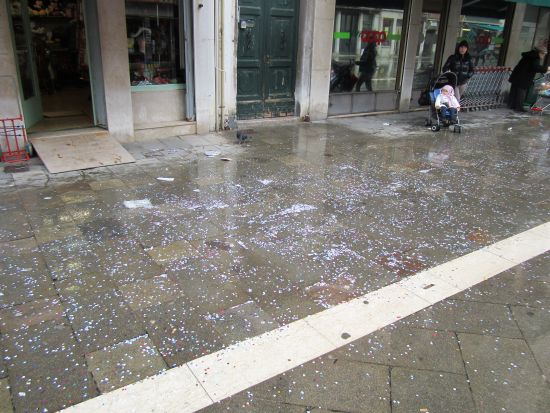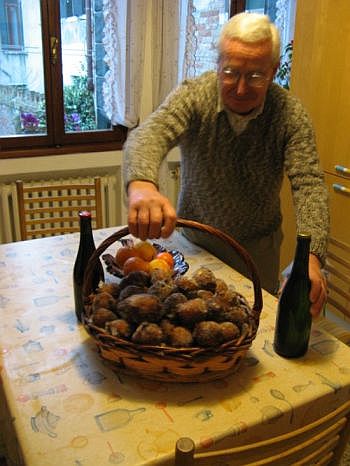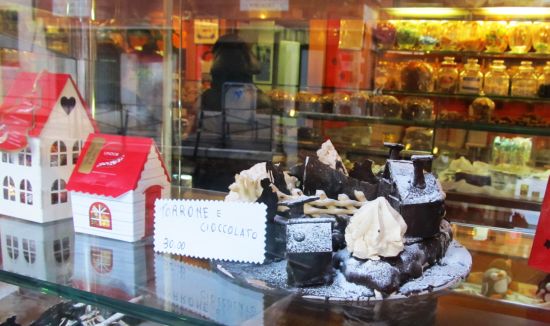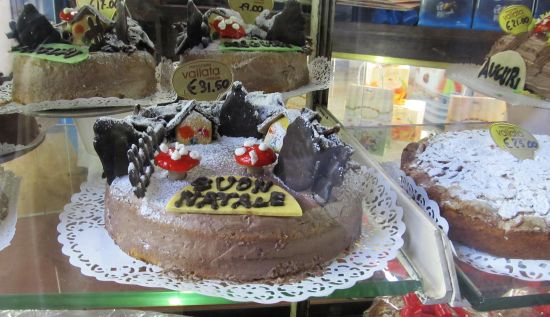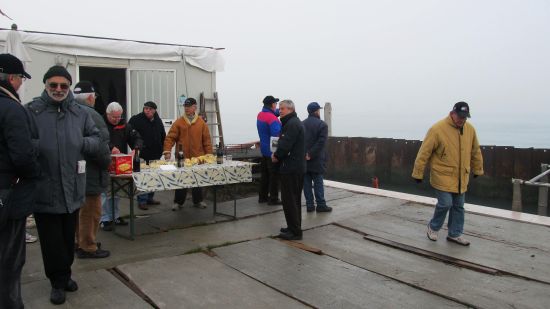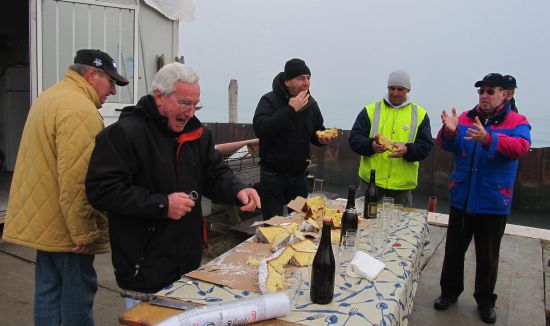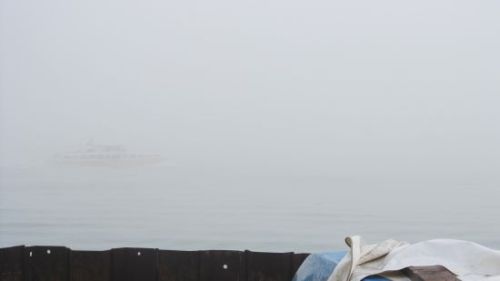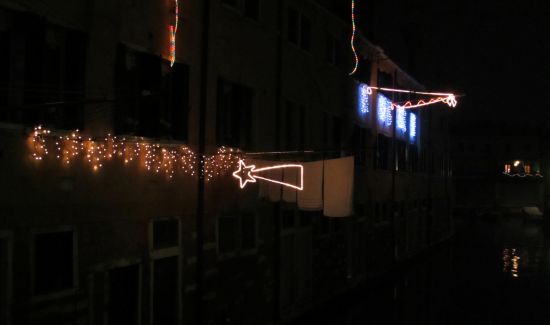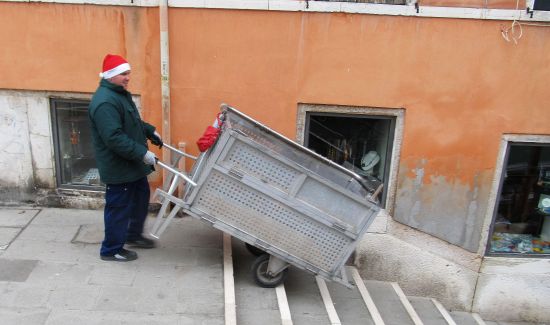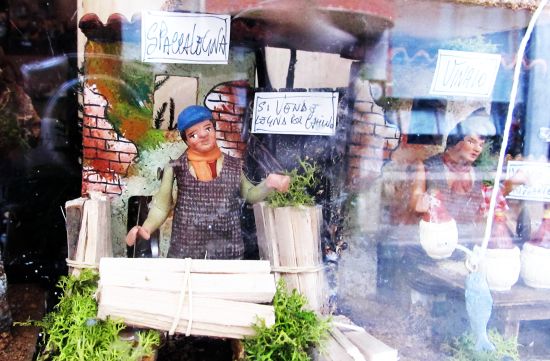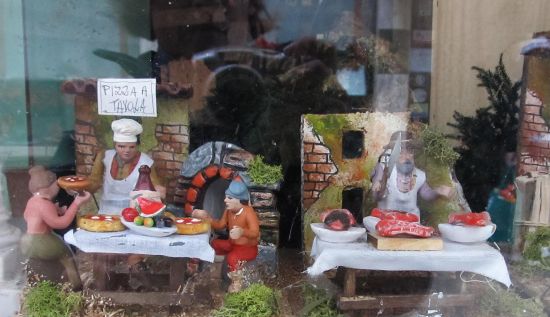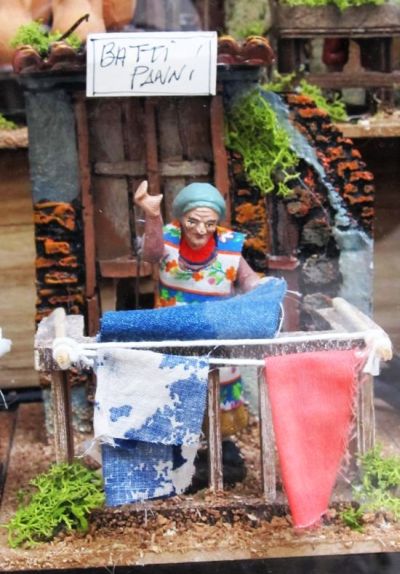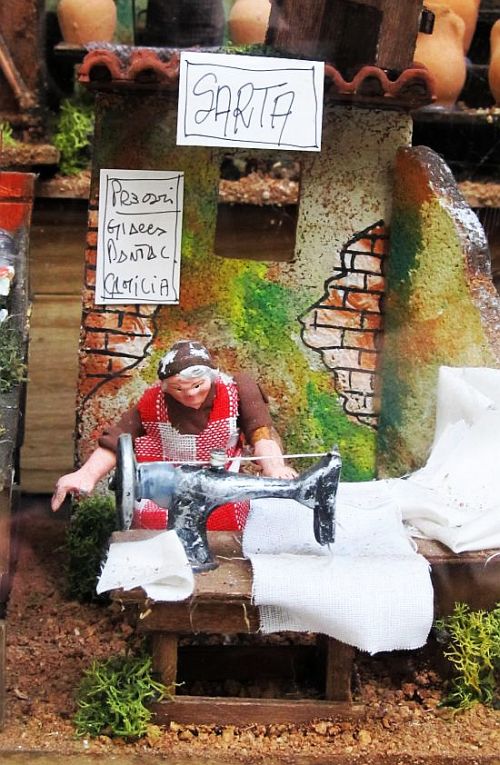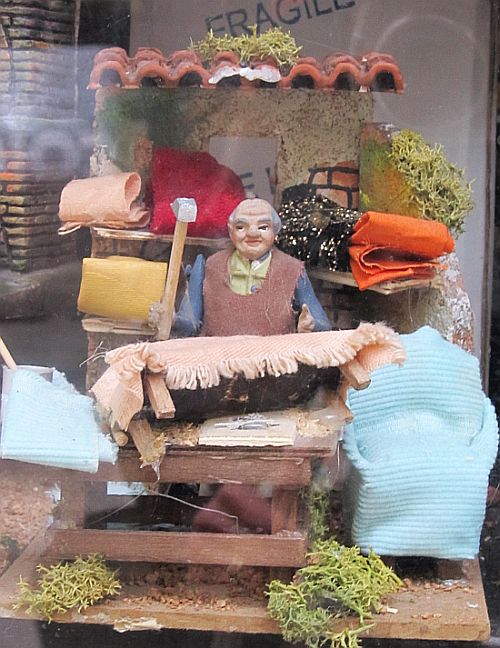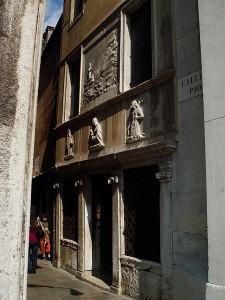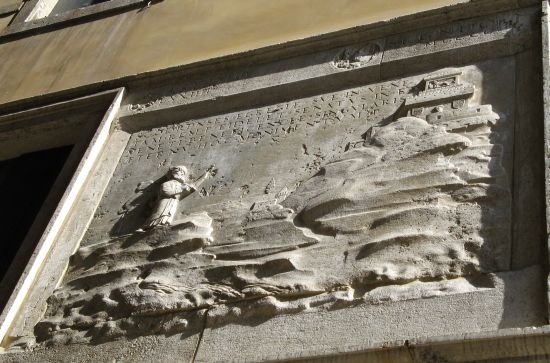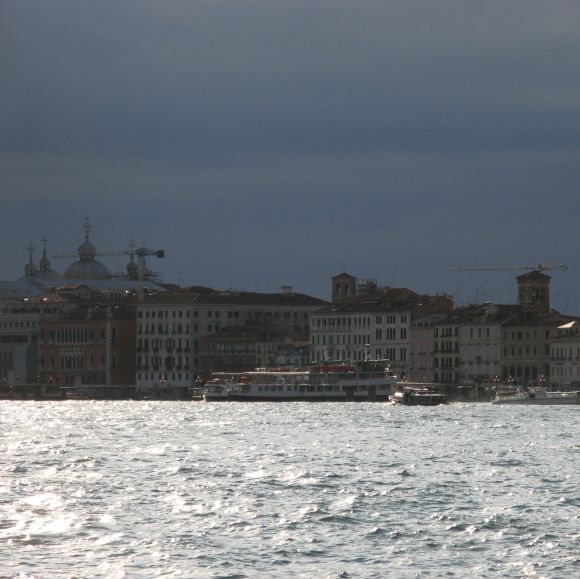
People sometimes ask me — or ask themselves, standing next to me — why the government of Venice doesn’t do one thing or the other to resolve the city’s problems, which are right out there for everybody to see. It seems impossible that nobody has come up with any ideas for what to do to make it cleaner, safer, more efficient (well, that might be a reach) — or just generally spiffed up and functioning. How can it be that no long-term solution is found for something — anything?
If we were to take the proverbial legal tablet and write the proverbial two comparative lists, one would be titled “Problems” (it would be a very long list), and the other “Solutions” (which would also be long). But there are almost no points at which they recognize each other and embrace, like twins separated at birth.
But guess what I just found out? People were raising red flags, launching the lifeboats, pulling out handfuls of hair in 1970 about the very same problems everyone complains about today. That’s 43 years of standing in one place. If I were a city, I’d be tired by now.
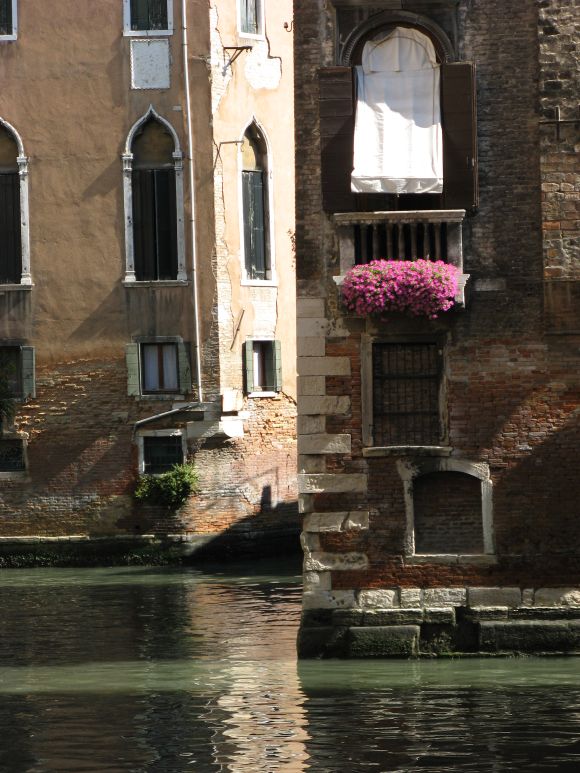
As I have long suspected, it’s not ideas that are missing here. (I mean, constructive, forward-looking, beneficial-to-everybody ideas). It’s execution.
Tides of ideas flow through Venice from all sides, but like the lagoon tide, they go out again. Most of them. To return again. Most of them. Some of them begin to be realized, then they stop. Then they start again. You get the idea. (Sorry.)
Here are some of the most telling bits from a big article in the Gazzettino last Sunday, written by Pier Alvise Zorzi. It might be useful to know that the Zorzi family is documented to have been in Venice since 964 A.D. That doesn’t mean he knows more than anyone else, I’m just saying he’s not the latest person to see the fireworks of the Redentore and decide to stay here forever.
Mr. Zorzi reports that back in April, 1970, veteran journalist Indro Montanelli dedicated virtually the entire month to articles about Venice and its problems — its particularity, its fragility, the housing depression, the political bungling, and so on.
“THE ILLS OF VENICE? THE SAME WERE REPORTED BY INDRO 43 YEARS AGO. From depopulation to the risk of the touristic monoculture, from the sublagunare project to the problems of housing.”
“I have in hand a page from the Corriere della Sera (April 23, 1970) with the headline: ‘The Youth Front for Venice,’ with the subtitle “On the lagoon one breathes the air of the Titanic — the discouragement which by now pervades the Venetians is the main danger to face – to break this passivity a movement of young people has arisen without any political label ready to support at the next elections anybody who defends Venice.”
Under some emblematic photographs are these succinct quotes from 1970, which read like telegraph messages from the front lines. It’s deja vu again, and again, and again.
“Tourism: The city can’t live only on hotels and restaurants.”
“Housing: Too many uninhabited palaces and the cost of rent is through the roof (as they say here, “to the stars”).”
“Dignity: Enough of sterile complaints: each person needs to get involved.”
He continues: “A young person who was interviewed complained of the progressive abandonment of the city…the problem of housing, which is not only decrepit but at much higher rents than on the mainland…And the culminating point, ‘We don’t intend to raise tourism to the level of a monoculture. A city like Venice can’t live only on hotels, trattorias, tips. It will become degraded.'”
And the solutions these young people suggest are also, by now, hoary and draped with cobwebs: More artisans, for example, or linking highly specialized institutions to the world of production and cultural foundations in Europe and America.
The Front eventually fell apart, but the old problems are still here, and have been joined by some new ones: “The ‘hole’ of the Lido (endless construction projects that are badly conceived, worse realized, mercilessly expensive); the ghost of corruption on the MOSE project (more about this in another post), the mega-billboards which continue in spite of new ministerial regulations.”
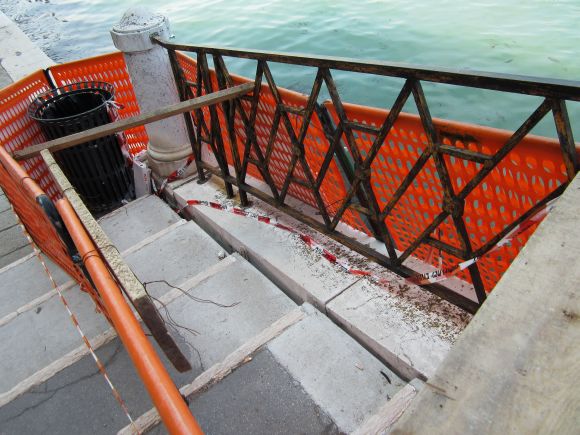
Zorzi acknowledges a few positive signs lately, small and tentative though they may be. But the essential character of the situation is not only unchanged, but maybe even unchangeable. “The problem,” he says, and so do lots of people here, “is that everyone who is able to make the decisions is so tied up in the webs of common interests, either political or economic (but aren’t they the same?) that they move only with extreme, sticky slowness.
“The risk? That 40 years from now we’ll still be right there, at the same spot. I don’t want my grandchildren still to be reading, for example, about the Calatrava bridge, that economic abyss … or the suspected speculation on the renovation of the Manin barracks. Or the hospital. Or the eternal MOSE. Or all the usual things which the national newspapers don’t bother with anymore because everybody’s fed up with Venice’s constant whining.
“I want Venice to have the dignity to save herself on her own, thanks to the citizens which consider her not as something to exploit, but something to invest in. I want the Venetians to denounce the little local mafias, instead of trying to join them in order to gain something for themselves. I want the multinationals who buy the palaces to invest in the city and not merely in their own image. I want that each person, even in their own little way, should do something to safeguard our special character. If I were to live for a hundred years, I’d like to read something new about Venice.”
You know what’s too bad about this cri de coeur? I’ve heard it before.
